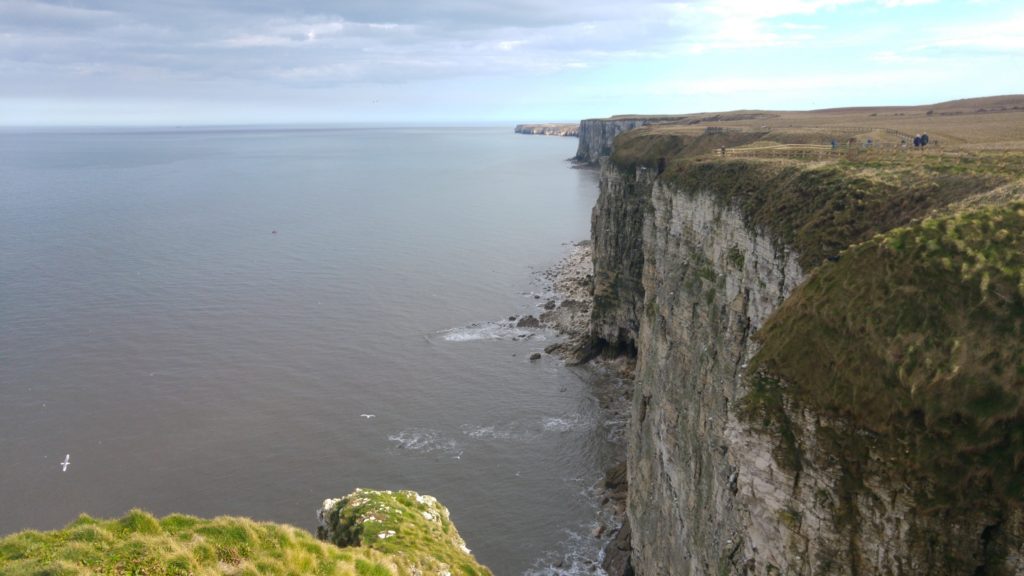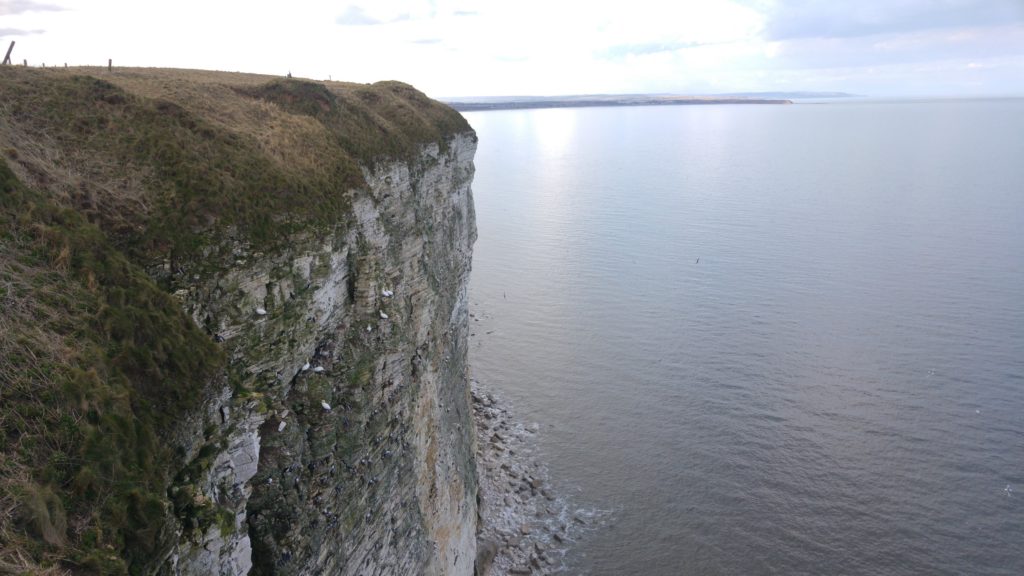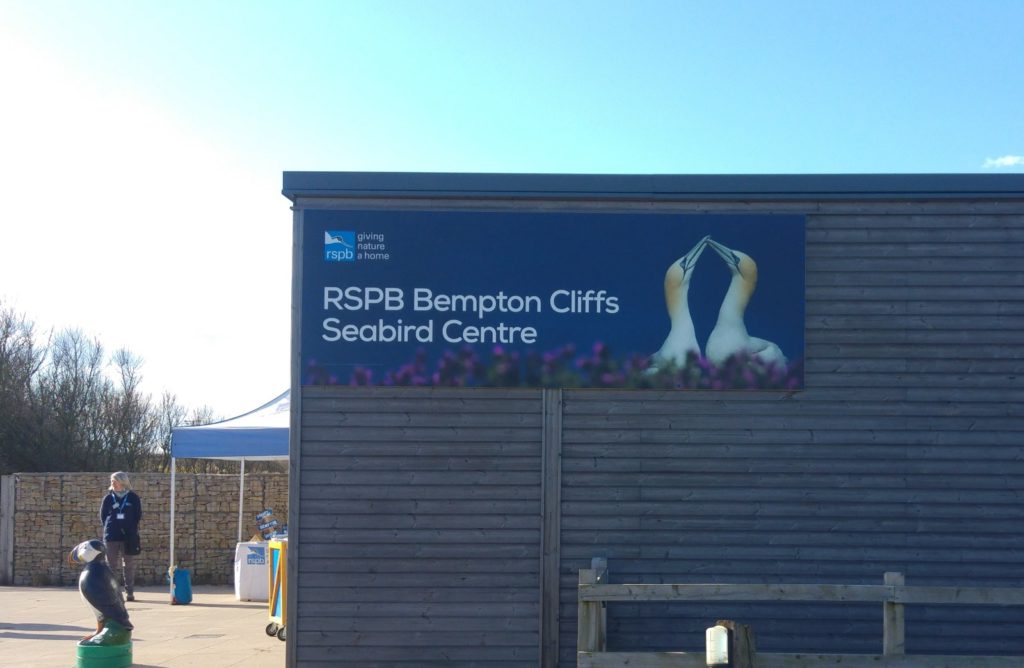Every year hundreds of thousands of visitors flock to Filey Bay – but I’m not talking about humans, I mean seabirds! The cliffs of Bempton are internationally known as an important breeding ground for many species of seabird, so much so that the cliffs are designated both a Site of Special Scientific Interest and a Special Protection Area.
RSPB Bempton is the best place to get up close and personal with different species of bird which cram onto tiny ledges to nest. They call this “Seabird City“, and the noise and bustle of thousands of birds calling, arguing, fishing or just having a sing-song is a spectacle you won’t forget in a hurry!
The imposing 400-foot chalk cliffs between Speeton and Flamborough, running past the villages of Buckton and Bempton, have long been known as a special site for birds. While bird eggs are protected now, not so many years ago they were prized either as collectors items (some eggs are just gorgeous to look at) or as delicacies in high-end restaurants, as well as being useful in the manufacture of various items. Local men known as “climmers” would clamber down the monumental cliff-face, attached to a single rope, to collect eggs.
The incredible danger these men faced showed just how sought-after the eggs were, and it’s easy to imagine locals being very glad of some extra earnings – even if they did have to take their lives in their hands to get it. Nowadays the eggs and cliffs are protected, and the locals have branched out into other less-dangerous commercial activities, like running cafes and art galleries!
At Bempton you’ll find a wide range of species, from herring gulls and shags to members of the auk family such as guillemots and razorbills. The fulmars and kittiwakes are well-worth seeing, but perhaps the stars of the show are the gannets and puffins.
Gannets
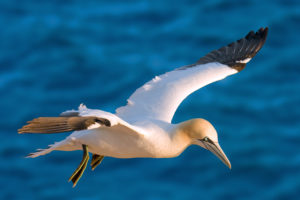 Gannets lay a single egg in their large, noisy colonies – known as gannetries – on wind-exposed cliffs in late April or early May. When chicks are born they weight just 60 grams and are almost naked. But thanks to constant feeding by adults the youngsters reach adult size in just five weeks, and by 13 weeks they weigh 4 kilograms. At this point they jump off the nesting ledge and start to fly! They start their journey south to the coast of West Africa, and have been known to travel as far as the equator.
Gannets lay a single egg in their large, noisy colonies – known as gannetries – on wind-exposed cliffs in late April or early May. When chicks are born they weight just 60 grams and are almost naked. But thanks to constant feeding by adults the youngsters reach adult size in just five weeks, and by 13 weeks they weigh 4 kilograms. At this point they jump off the nesting ledge and start to fly! They start their journey south to the coast of West Africa, and have been known to travel as far as the equator.
Around 60% of the world population of gannets nest in Britain, which makes places like Bempton perfect for watching these master fishermen at work. They dive into the water at speeds of up to 60mph, taking them 20m down into the water where they grab a tasty meal – herrings, mackerel or sprat. The phrase “as greedy as a gannet” is absolutely true – sometimes they eat so much they can hardly take off again!
Puffins
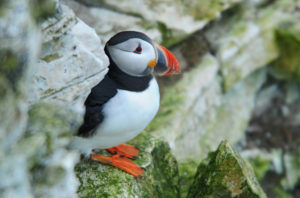 The puffins found at Bempton – more accurately described as Atlantic puffins – are famous for their colourful beaks, which are used to attract a mate. You could say that puffins are stylish dressers – most of their outfit is black and white, then they accentuate with beaks of red, orange and blue, and striking orange legs and feet.
The puffins found at Bempton – more accurately described as Atlantic puffins – are famous for their colourful beaks, which are used to attract a mate. You could say that puffins are stylish dressers – most of their outfit is black and white, then they accentuate with beaks of red, orange and blue, and striking orange legs and feet.
When flying, puffins seem to be making hard work of it, their wings beating up to 400 times per minute! But it’s under the water they are at their best, able to dive to a depth of 60m they swim by flapping their short wings – just like flying – and using their feet to steer.
They have the ability to carry several fish in their beaks at once, due to a clever hinge mechanism, and this way both parents feed their single youngster – which has the wonderful name of “puffling”! – for about 45 days after hatching. Puffins can live for around 20 years, and form long-term relationships, returning to the same site year after year to share the job of incubating their egg.
RSPB
The Society for the Protection of Birds (SPB) was founded by Emily Williamson at her home in Manchester in 1889, in response to the fashion for using plumes of feathers in hats. The society was so successful that it was granted its Royal Charter in 1904, just 15 years after being founded. And over 100 years later they are still the foremost organisation for the protection of all species of birds – and many other types of wildlife – in Britain.
RSPB Bempton cliffs is a fantastic site to visit, having a new centre opened in 2015 which has space for a cafe, information displays and a shop which stocks wildlife books as well as a good range of binoculars and telescopes. You can explore five kilometres of cliff-top, with well-made paths and several spacious viewing platforms right on the cliff edge. Helpful staff are often on hand, and when we’ve visited there’s been a lovely atmosphere between the visitors, with people more than willing to lend binoculars to those without!
We can’t recommend RSPB Bempton highly enough, and of course you’ll want a lovely place to stay while you’re nearby. See what availability we have at Clara’s Den, our Filey Bay holiday apartment.
